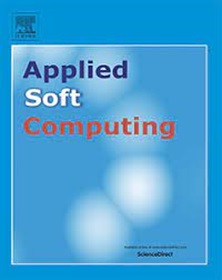A multi-population multi-tasking Tabu Search with Variable Neighborhood Search algorithm to solve post-disaster clustered repairman problem with priorities
IF 7.2
1区 计算机科学
Q1 COMPUTER SCIENCE, ARTIFICIAL INTELLIGENCE
引用次数: 0
Abstract
The Clustered Traveling Repairman Problem (cTRP) is an extended variant of the Traveling Repairman Problem (TRP), where customers are grouped into clusters that must be visited contiguously. However, the problem in post-disaster contexts has not yet been considered under the following constraints. First, the repairman requires additional time to remove debris, which adds debris removal time to the travel cost. Second, vertices in each cluster have varying priorities depending on their importance, with higher-priority vertices offering greater benefits when reached. This paper addresses these challenges by first defining the problem in post-disaster scenarios and then introducing a novel metaheuristic, TS-MMP, based on Multitasking Multipopulation Optimization (MMPO). This approach enables concurrent and independent task execution by integrating Randomized Neighborhood Search (RNVS), Tabu Search (TS), and dynamic knowledge sharing to improve problem-solving efficiency. In TS-MMP, the dynamic knowledge transfer mechanism ensures diversification, while TS and RNVS enhance intensification capabilities. Tabu lists prevent the search process from revisiting previously explored solution spaces. As a result, TS-MMP achieves superior solutions compared to other algorithms. Empirical results demonstrate that optimal solutions for instances with up to 30 vertices can be solved exactly using both the proposed formulation and TS-VNS-MMP. Moreover, TS-VNS-MMP provides high-quality solutions within a reasonable time for larger instances, confirming its impressive efficiency.
求助全文
约1分钟内获得全文
求助全文
来源期刊

Applied Soft Computing
工程技术-计算机:跨学科应用
CiteScore
15.80
自引率
6.90%
发文量
874
审稿时长
10.9 months
期刊介绍:
Applied Soft Computing is an international journal promoting an integrated view of soft computing to solve real life problems.The focus is to publish the highest quality research in application and convergence of the areas of Fuzzy Logic, Neural Networks, Evolutionary Computing, Rough Sets and other similar techniques to address real world complexities.
Applied Soft Computing is a rolling publication: articles are published as soon as the editor-in-chief has accepted them. Therefore, the web site will continuously be updated with new articles and the publication time will be short.
 求助内容:
求助内容: 应助结果提醒方式:
应助结果提醒方式:


